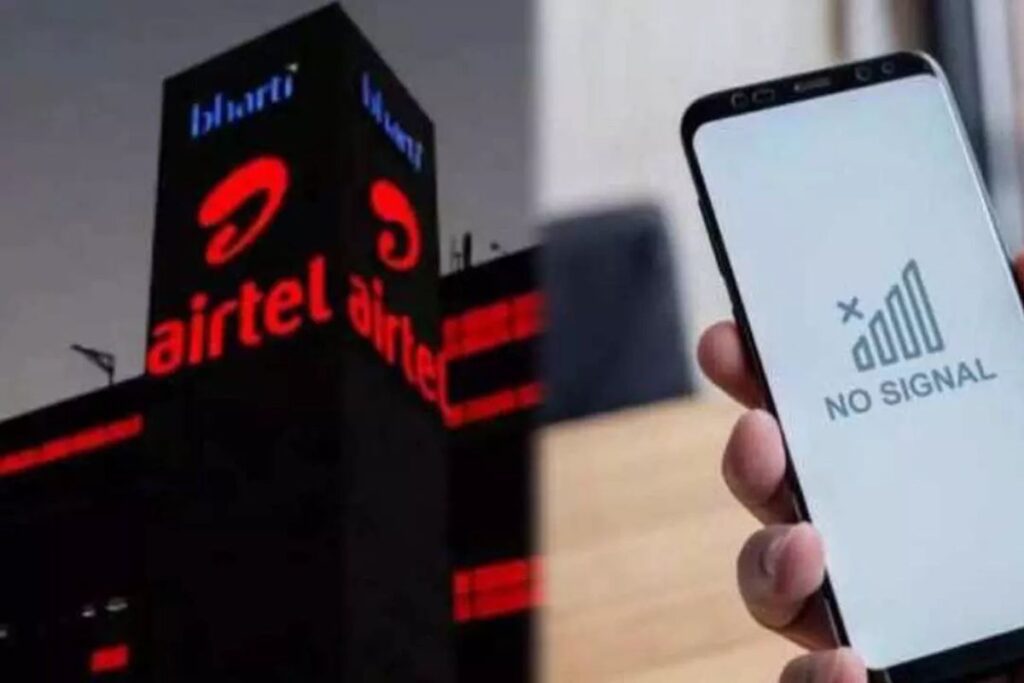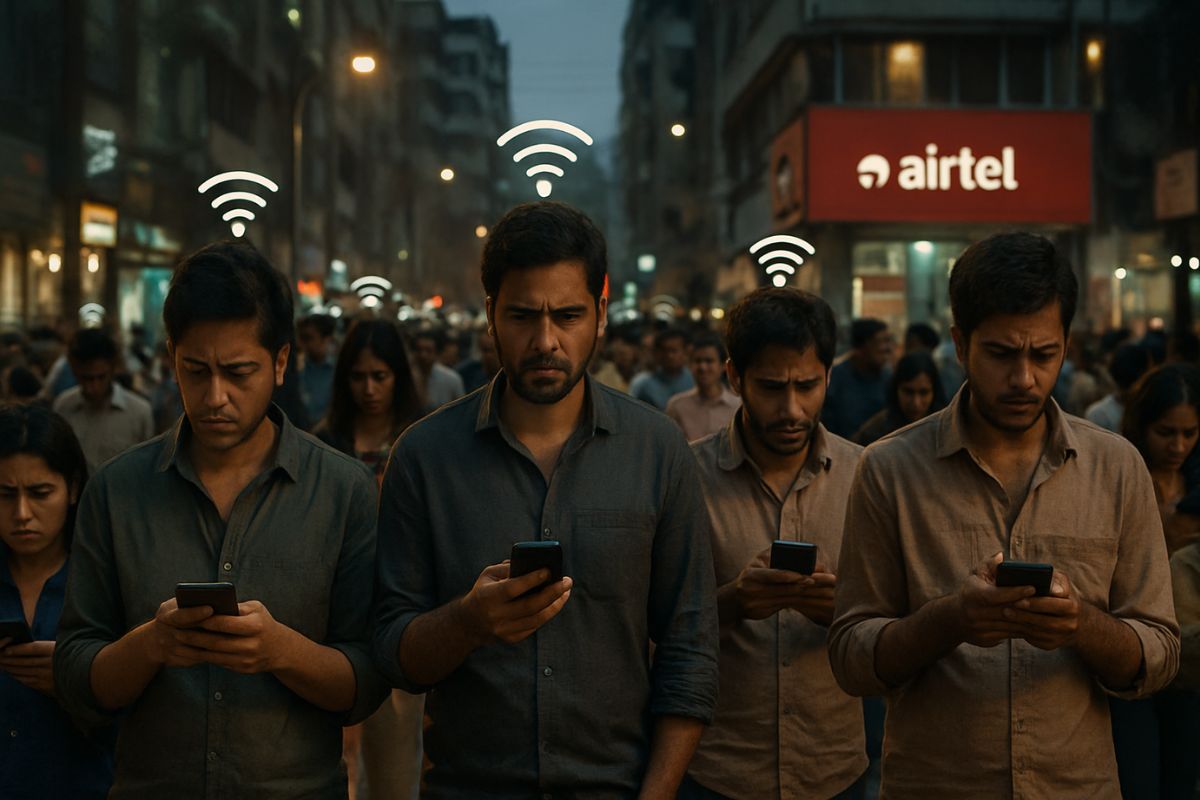Outage Hits Millions: Calls, Internet, and Messages Disrupted
Funny thing is, you don’t realize how much you rely on a mobile network until, smack in the middle of a regular Monday, your calls start to drop, your messages refuse to send, and the spinning wheel of mobile internet just won’t quit. That’s what millions of Airtel subscribers in India faced on August 18, 2025. The network outage, which started as a trickle of complaints, soon became a national headache.
The First Signs: Reports Flood In
It started quietly enough. Around 4:30 pm, a handful of Airtel usersprimarily in Delhi-NCR, but soon popping up in Mumbai and Bengalurutook to X (formerly Twitter) and began tagging Airtel and each other. Their complaint: total network failure. No calls in, no calls out… not even a basic SMS would go through.
And thenlike dominoes, those reports multiplied. Downdetector, the online glitch-and-outage tracker, clocked over 3,600 Airtel outage complaints at the peak. By 5:30 pm, the number dipped below 2,000. The worst seemed to pass quickly, but you can imagine: for those caught in the middle, it felt much, much longer.
Social Media Erupts: AirtelDown
The hashtags tell the story: #AirtelDown trended at top spots on X. Some users offered humor and patience, “Don’t panic if you can’t call your loved ones, just wait,” while others, including plenty of frustrated professionals, demanded answers from the company. You know how it goes: When connectivity drops, temperature rises.
Airtel’s Response: Promise to Restore, but No Specifics
Airtel did respond, both publicly and directly, to customer queries. The official message?
“We are currently experiencing a network outage. Our team is actively working to resolve the issue and restore services promptly. We sincerely apologize for the inconvenience caused.”
Kind of bland, sure, but at least it acknowledged the issue. What Airtel didn’t provide, however, was a clear explanation root cause, or even an estimated time for full restoration. That left many subscribers refreshing apps and reloading emails, holding out hope for a speedy fix.
What Users Saw
- No ability to make or receive calls
- Failure to send or receive SMS messages
- Mobile internet: dead in the water, for many users
- Complaints peaked mainly for mobile phone services, with data and signals trailing as secondary concerns
So why the silence from Airtel about the precise reason? Here’s the kicker: with telecom infrastructure, pinpointing a fault can take time, and companies are often hesitant to speculate before they’re sure. That didn’t exactly help the folks waiting for updates, but it’s standard industry practice, if I’m honest.
How Big Was the Outage?

Was this just a local glitch? Or something more?
Well, the earliest warnings came from users in Delhi and surrounding areas. But within minutes, the scope widened: Mumbai, tech-saturated Bengaluru, and, as some users claimed, other parts of India as well. Some on X alleged the “entire country” felt the impactthough actual numbers are tough to come by, since official statements favored caution over specifics.
Why These Outages Hurt So Much
India is home to over a billion mobile subscribers. Airtel, as one of the “big three” telcos, handles hundreds of millions. For business owners, gig workers, students attending remote classes, families keeping in touch, a drop in mobile connectivity isn’t just annoying can disrupt routines, meetings, and even emergencies.
Here’s what’s at stake, every time this happens:
- Emergency services: Delays or inability to call for help
- Business operations: Orders, payments, and communications grind to a halt
- Remote work: Video calls, emails, collaborative apps, all offline
- Daily life: From digital payments to chatting with friendsyou know, the small stuff that fills your day
It’s no exaggeration to say that when a provider like Airtel goes down, the ripple effect reaches nearly every corner of modern, plugged-in life in India.
Timeline: The Anatomy of the Airtel Outage
Let’s break down, moment by moment, how the August 18 outage unfolded.
Early Afternoon’s Well (Or So It Seems)
Customers go about their streaming, texting, calling, and browsing. No warning, no alert, no clue that a major service interruption is just around the corner.
4:00pmFirst Rumblings
A few users in Delhi-NCR notice something off. Calls fail, messages bounce. They reach out to Airtel, checking social media for someone else facing the same problem.
4:30pmThe Numbers Spike
Downdetector and similar services start logging higher-than-average complaints. Hashtag trend. Reports from Mumbai and Bengaluru suggest a spreading problem.
5:30pmComplaints Ease
An hour in, outage reports begin to subside. Some users find their connection working again, while others remain offline.
6:00 pm–7:00pmPatchy Restoration
In certain areas, like central Delhi, service seems almost normalized. In others, especially the edge zones, users still complain of dropped calls and spotty signals.
The Broader Context: Telecom Outages in Modern India
Here’s some perspective. This Airtel outage isn’t the firstnor, honestly, will it be the last. All three major telcos (Airtel, Reliance Jio, Vodafone-Idea) have weathered similar storms in the past decade.
Common Causes
- Infrastructure failure: Server crashes, overheating hardware, or a central switching error
- Fiber cuts: Construction accidents or natural events damaging underground cables
- Software woes: Glitches or failed updates on network management systems
- DDoS attacks: Although rare, targeted cyber assaults can disrupt major telecom players
- Power failures: Sometimes, even redundancy isn’t enoughespecially during extreme weather events
The trouble is, telecom systems must juggle huge amounts of data, 24/7, serving cities and remote villages alike. That means more potential points of weakness.
Regulatory Landscape
The Telecom Regulatory Authority of India (TRAI) holds providers to strict quality-of-service standards. When outages turn major, companies can face fines and, just as uncomfortable, reputation damage.
But, in almost every case, regulators rely on the companies themselves for root-cause analysis and recovery.
The Human Impact: Voices from the Outage
For every technical explanation, there’s a person on the receiving end stuck on a broken call, or staring at an empty inbox. During the outage, you hear stories like:
- A student, barred from logging into a scheduled online exam, worried about losing the attempt
- A businesswoman in Mumbai, unable to process digital payments at her retail shop for a crucial hour
- Families across cities and small towns, suddenly cut off from out-of-state relatives, are relying on text chains that just wouldn’t update
Quotes from social media painted a picture of frustration, uncertainty, and sometimes solidarity. One user wrote:
“If you are an #Airtel user and unable to make calls, you’re not alone. Seems like a widespread outage. Don’t panic if you are not able to get in touch with your loved ones. Just be patient.”
How Did Airtel Communicate (Or Not)?
Let’s talk about crisis management. During service interruptions, speed and clarity are everything. While Airtel’s posts on X confirmed the situation and assured subscribers that teams were “working to restore services promptly,” critics noted the lack of concrete details.
- No public estimate for full restoration
- No insight into technical causes
- No update frequency commitment (whereas some global telcos issue hourly progress updates, for comparison)
In India’s ultra-competitive telecom market, that’s a dangerous lookeven when restoration is swift.
Safety Nets: What Can Consumers Do?
If your network service has ever dropped out, you know it’s a helpless feeling. But there are a few steps worth remembering, next time it happens:
- Restart your phone sometimes; coverage returns faster than you think
- Try toggling airplane mode on and off
- For critical calls, see if Wi-Fi calling is available
- Consider a backup SIM or secondary line, if you need to stay connected
It’s not a perfect solution, but in an era of frequent, even momentary, outages, flexibility is key.
The Big Picture: Why Rapid Repair (and Accountability) Matters
With India’s Digital India push and increasing dependence on online services, robust network connectivity is more critical than ever. Every time there’s a disruption, companies face public scrutiny, customer ire, and looming questions about infrastructure resilience.
What Telecoms Can Learn
- Real-time, transparent communication: Customers expect regular, clear updates not vague posts
- Investment in redundancy: Extra hardware, better power backups, and software safeguards
- Incident review and public reporting: The public and regulators want to know what happened, and how future glitches will be prevented
Looking Ahead: Will There Be Repercussions?
It’s too soon to say what regulatory fallout, if any, will follow this high-profile outage. But here’s what tends to happen:
- Internal review: Airtel will analyze network logs, identify failure points, and draft mitigation plans.
- TRAI involvement: If the outage is deemed severeespecially if millions of users were regulators may ask for a formal explanation.
- Customer relationships: The company may roll out goodwill gestures (bonus data, bill credits, apologies via SMS or email) depending on customer backlash.
The real test? Whether the next outagewhenever it comesfinds Airtel better prepared, and more nimble in its response.
Tips for Staying Informed About Network Status
Want to know right away if your network is down? Bookmarking sites like Downdetector or following your provider’s official handles on social media can help. Many users learn of outages there before any text message lands from their telco.
You might also want to keep emergency communication apps handy, like WhatsApp or Telegram; sometimes they remain functional even when regular SMS/calling fails, provided there’s Wi-Fi.
Final Thoughts: Airtel, Customers, and India’s Digital Future
Lookservice interruptions happen, no matter what. What matters most is how quickly providers like Airtel own the problem, keep users in the loop, and restore normalcy. In the always-on world of digital India, “sorry for the inconvenience” just doesn’t cut it. Airtel’s August 18 outage showed both the vulnerabilities and the resilience of the country’s telecom backbone.
As the dust settles, one thing’s for sure: the demand for bulletproof connectivity will only grow stronger. And in that, both challenge and opportunity wait on the other side.
Key Takeaways
- On August 18, 2025, a major Airtel network outage disrupted calls, internet, and messaging services across India, with Delhi, Mumbai, and Bengaluru worst hit.
- Over 3,600 outage reports were logged at the peak, tapering off after an hour as services were gradually restored.
- Airtel acknowledged the problem, apologized, and promised prompt restoration but stopped short of giving reasons or timelines.
- The disruption spotlighted India’s reliance on robust telecom networks and the challenges operators face in keeping millions connected, always.
- Regulators may scrutinize the outage, but the bigger issue remains: how to build a fault-tolerant, always-on digital backbone for the world’s most populous democracy.






















